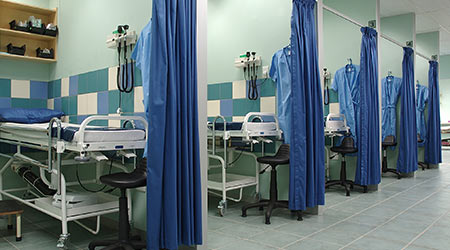
According to Kalorama Information, the global hospital acquired infection control market was worth about $16 billion in 2016. This market focuses on nosocomial infections, infections that develop in patients during hospitalization or during stays at health facilities. The market figure includes testing products, device sterilization, specific cleaning products, and HAI treatments. The healthcare market research firm's report, Hospital Acquired Infection (HAI) Control Markets, provides market analysis for the prevention, diagnosis, and treatment segments of such infections.
"The infection control market is a probable growth market for some time," said Bruce Carlson, Publisher of Kalorama Information. "There will always be a need to control these infections, as many of the bacteria that cause infection evolve and develop resistance to antimicrobials. New approaches to preventing, diagnosing, and treating such infections will be required for the long-term."
The U.S. Department of Health and Human Services (HHS) is committed to reducing the national rate of HAIs by demonstrating significant, quantitative, and measurable reductions in Catheter-Associated Urinary Tract Infection (CAUTI), Central Line-associated Bloodstream Infections (CLABSI), Clostridium difficile ("C. diff"), methicillin-resistant Staphylococcus aureus (MRSA), and surgical site infections.
The prevention segment of the HAI control market encompasses both sterilization and disinfection equipment. There is a growing trend for department-wide treatments and a revolving replacement rate is continuing to generate market stability. The rate of replacement for typical steam, heat or chemical sterilizers is between 8 and 11 years, which offers a stable replacement sales base. New technologies are a driving factor for growth, with increasing interest in wide-area sterilizing and disinfecting programs.
Diagnosis – testing for nosocomial infections – is a fast-growing market segment. The increased awareness of infections is improving sales for the segment; admission screening and susceptibility testing are become popular choices for reducing infection risks.
The treatment segment of the HAI control market has struggled to maintain growth with a weak development pipeline, growing generic product introductions, and growing resistance problems. However, more advanced products effective at treating serious infections demand a higher price, which is continuing to offset some challenges in the market.
For more information, click here.

 Celebrating BSCAI's 60th Anniversary eBook
Celebrating BSCAI's 60th Anniversary eBook The Down and Dirty on Cleaning in Virus Season
The Down and Dirty on Cleaning in Virus Season How Surfactant Use is Expanding in Commercial Cleaning
How Surfactant Use is Expanding in Commercial Cleaning